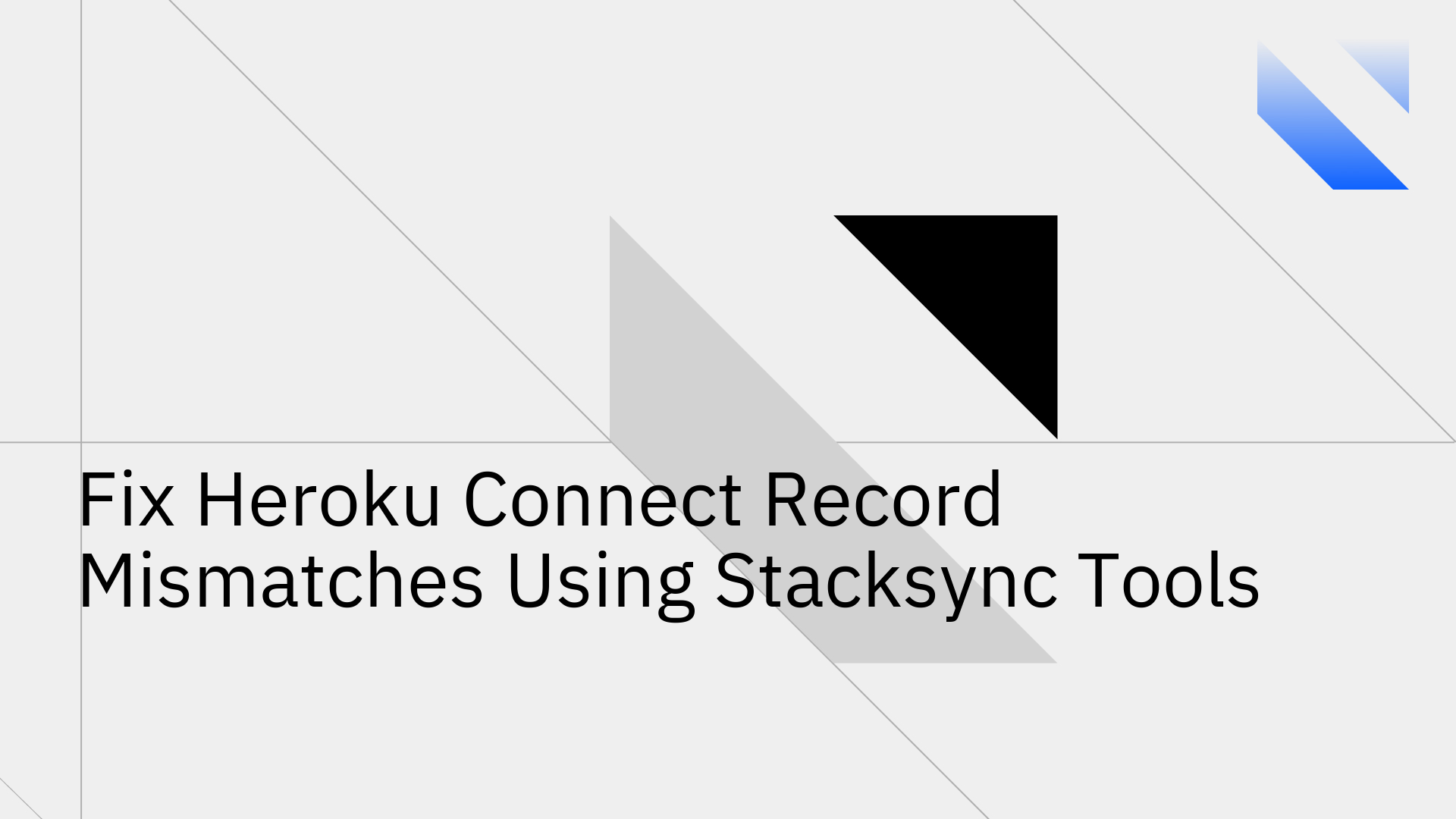For modern applications, keeping data synchronized between Salesforce and Heroku is critical. When this sync fails, you face the common and frustrating problem of Heroku Connect record mismatches. These discrepancies create data integrity issues, break essential workflows, and lead to a poor user experience.
This article explores the causes of these mismatches and shows you how to fix them efficiently using Stacksync's advanced tools.
Understanding the Root Causes of Heroku Connect Record Mismatches
While Heroku Connect is a useful tool, its architecture can lead to several types of data consistency problems. Understanding these weak points is the first step toward building a more reliable data pipeline.
Common Triggers for Data Discrepancies
Several issues with Heroku Connect's design can cause data to become inconsistent.
- Sync Delays and Polling Intervals: Heroku Connect relies on polling, typically checking for changes every 10 minutes. This delay creates a window where data can become out of sync, especially in high-volume environments where records are updated frequently.
- API and Write Errors: Errors that occur when writing data from Heroku Postgres to Salesforce can cause records to fail, leading to inconsistencies where your database is updated but Salesforce is not [7].
- Schema Mismatches: Changes in your database schema or Salesforce object structure can cause the sync process to fail or get stuck. This can happen if a field is altered or removed, leaving your data in limbo [2].
- Calculated and Formula Fields: Calculated fields in Salesforce don't always trigger the system updates that Heroku Connect needs to detect a change. This means your Postgres database can be left with stale data after the initial sync, as subsequent updates are missed [4].
- Database Exceptions: Issues within the Postgres database, like missing system tables, can halt the connection entirely and cause
InvalidDatabaseException errors, leading to major data mismatches [3].
The Business Impact of Inaccurate Data
These technical issues quickly become business problems:
- Broken Operations: Mismatched data can break automated workflows, internal tools, and customer-facing applications that depend on accurate information.
- Eroded Trust: Data integrity issues reduce confidence in your systems and reports, which negatively impacts decision-making across your organization.
- Wasted Engineering Hours: Developers end up spending significant time and effort—often 30-50% of their focus—troubleshooting cryptic error logs and manually reconciling data instead of building new features [6].
The Manual Approach: Trying to Fix Mismatches in Heroku Connect
Trying to fix Heroku Connect record mismatches manually is the "hard way." It's a time-consuming process that involves digging through logs, running manual queries, and comparing datasets line by line.
The process often requires pausing the sync, attempting a manual fix in either Salesforce or Postgres, and then reloading the mapping, all of which can be disruptive to your operations [8]. This is a reactive solution that only fixes problems after they occur. Instead of constantly putting out fires, you need a proactive solution. This is where a great alternative to Heroku Connect like Stacksync comes in.
The Stacksync Method: Proactive Prevention and One-Click Resolution
Stacksync is designed to prevent mismatches from happening in the first place and to make fixing them effortless when they do.
Real-Time, Two-Way Sync to Prevent Discrepancies
Stacksync syncs data in milliseconds, not minutes. By using an event-driven architecture instead of a polling mechanism, it provides a real-time, bidirectional flow of information that drastically reduces the chance of mismatches. This modern approach is a key differentiator in any Heroku Connect vs Stacksync comparison, ensuring your data is always consistent.
The Issue Management Dashboard: Your Sync Command Center
Stacksync provides a dedicated dashboard for managing sync issues, turning a difficult troubleshooting process into a simple task.
Key features include:
- Clear Error Messages: Errors are presented in a human-readable format that pinpoints the exact record and issue, so you know what went wrong immediately.
- One-Click Retry/Revert: You can resolve a failed sync with a single click, without needing to perform any manual data manipulation.
- Real-Time Alerting: Get notified instantly via Slack or email when an issue occurs, allowing you to address it before it affects your business.
Automatically Handling Complex Sync Scenarios
Stacksync is built to manage the complexities that often break other sync tools.
- Smart API Rate Limiting: The platform intelligently manages API calls to prevent you from hitting rate limits, which is a common cause of failure in other systems.
- Custom Objects and Fields: Stacksync seamlessly supports all standard and custom objects and fields, avoiding the schema-related errors that plague other tools.
- Scalability: Stacksync is built to handle millions of records without performance degradation, so you can replace Heroku Connect with an affordable, real-time sync that scales as your company grows.
Your Mismatch-Free Future with Stacksync
The difference is clear: Heroku Connect offers a reactive and manual approach, while Stacksync provides a proactive and automated solution. With Stacksync, your team can spend less time fixing broken data pipelines and more time building value. When comparing Stacksync vs Workato and other Heroku Connect alternatives, our focus on real-time, bi-directional sync offers unparalleled reliability.
Ready to see the difference for yourself? Sign up for a free 14-day trial or book a demo with one of our cloud architects today.
